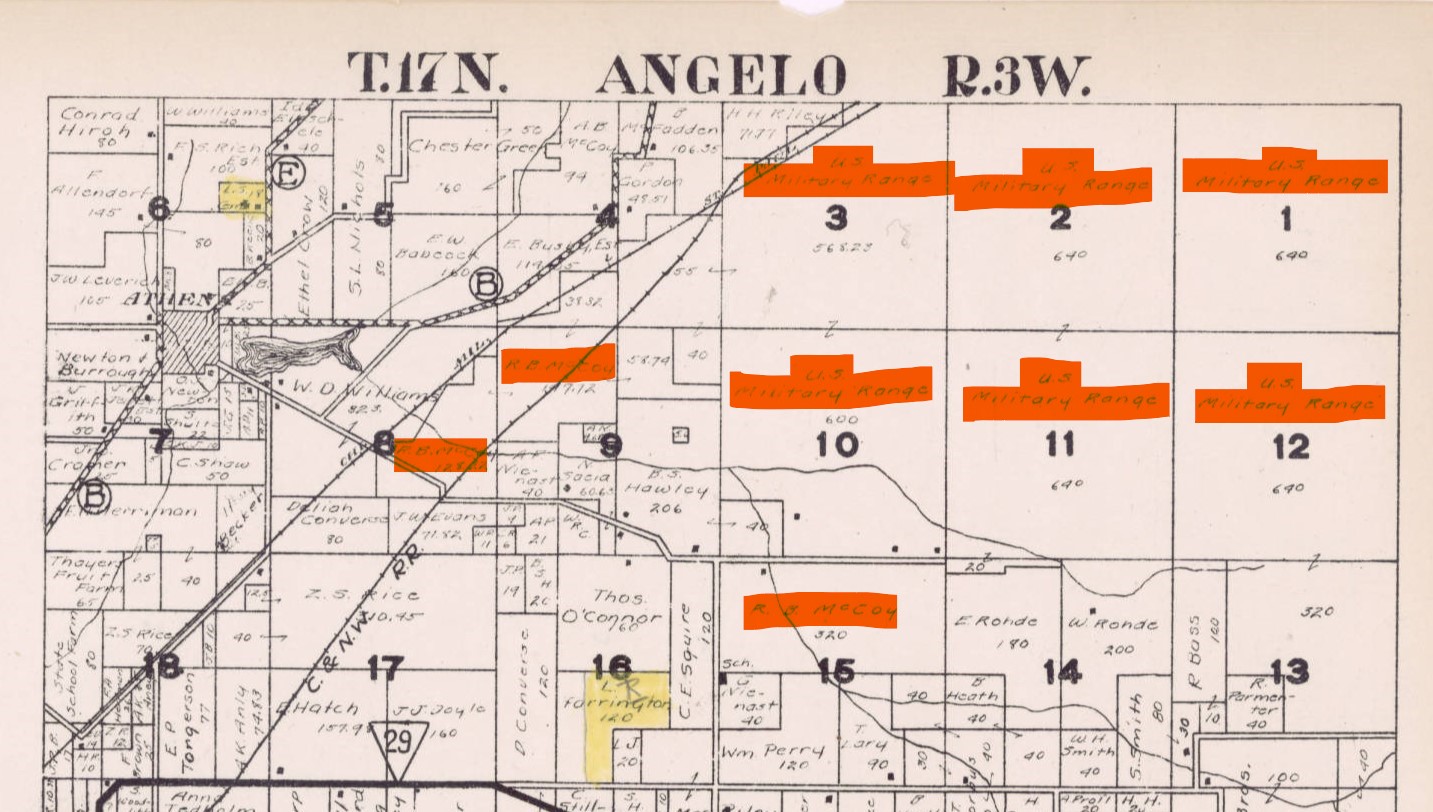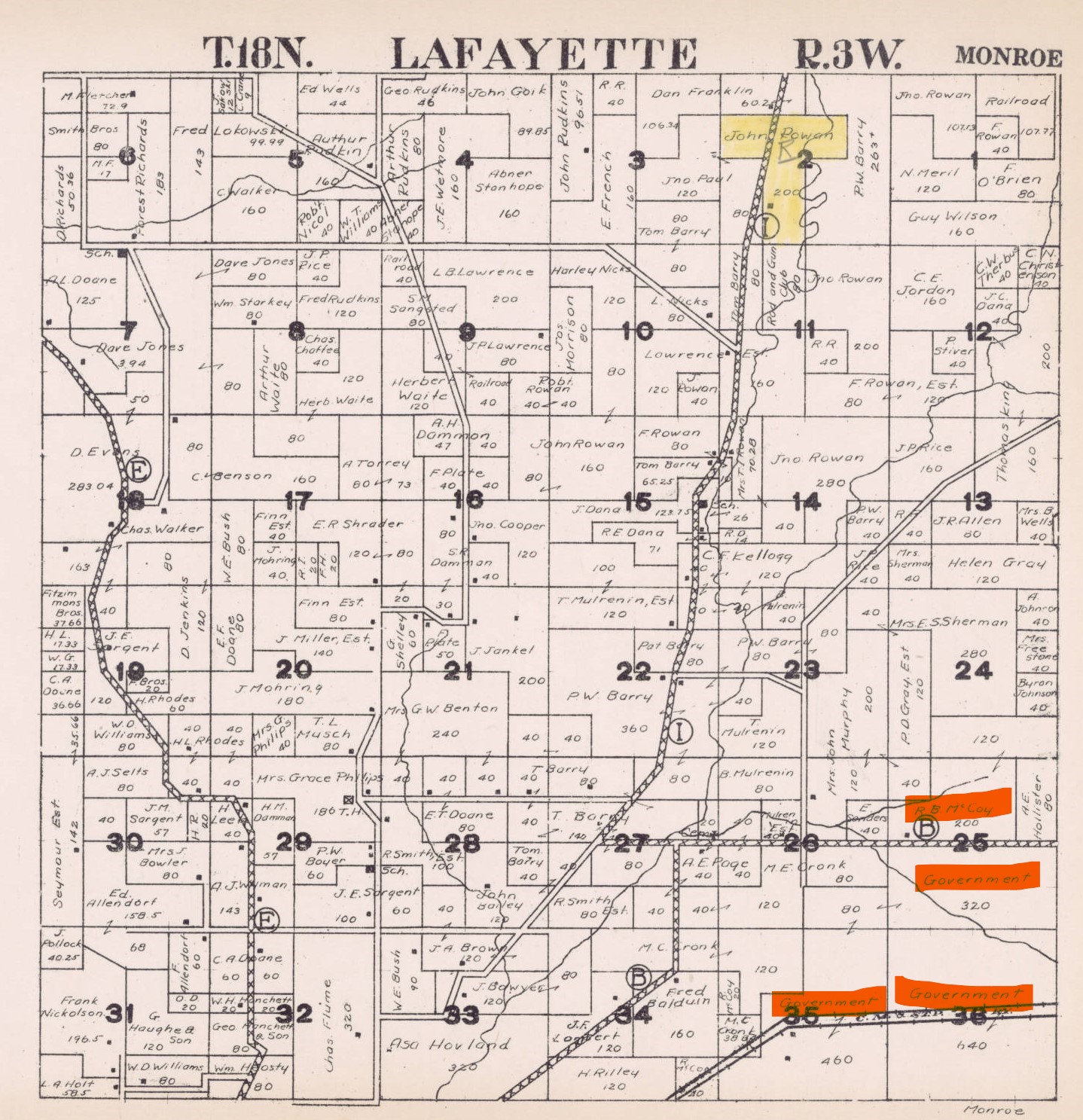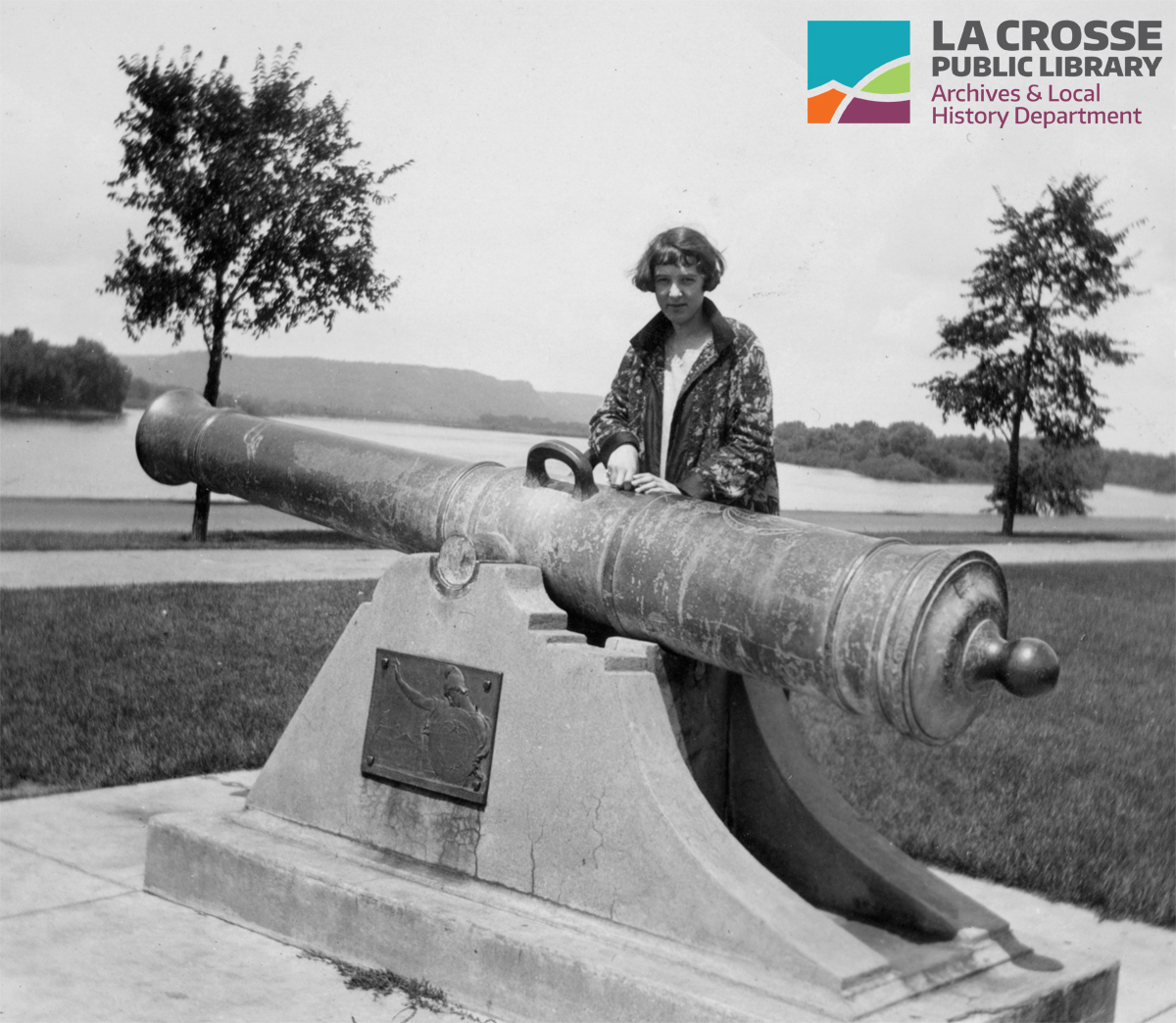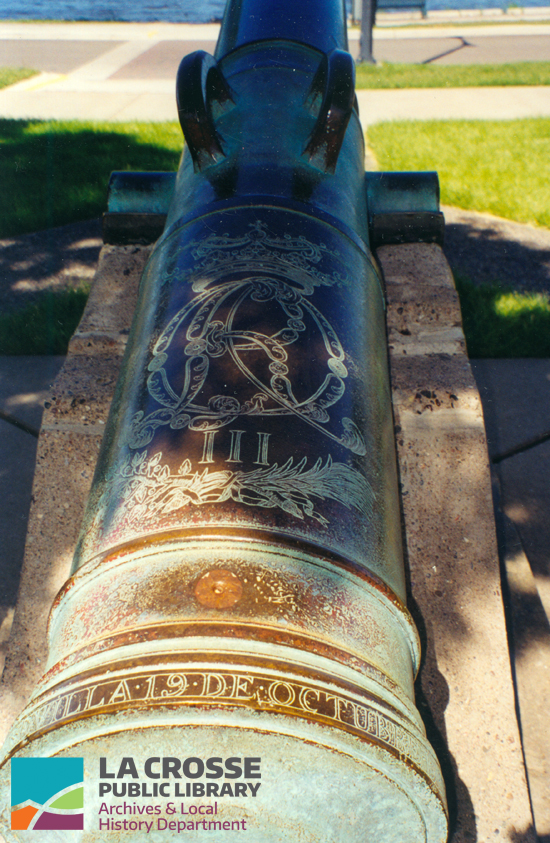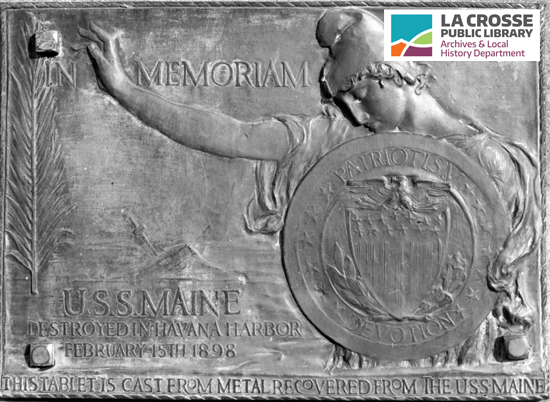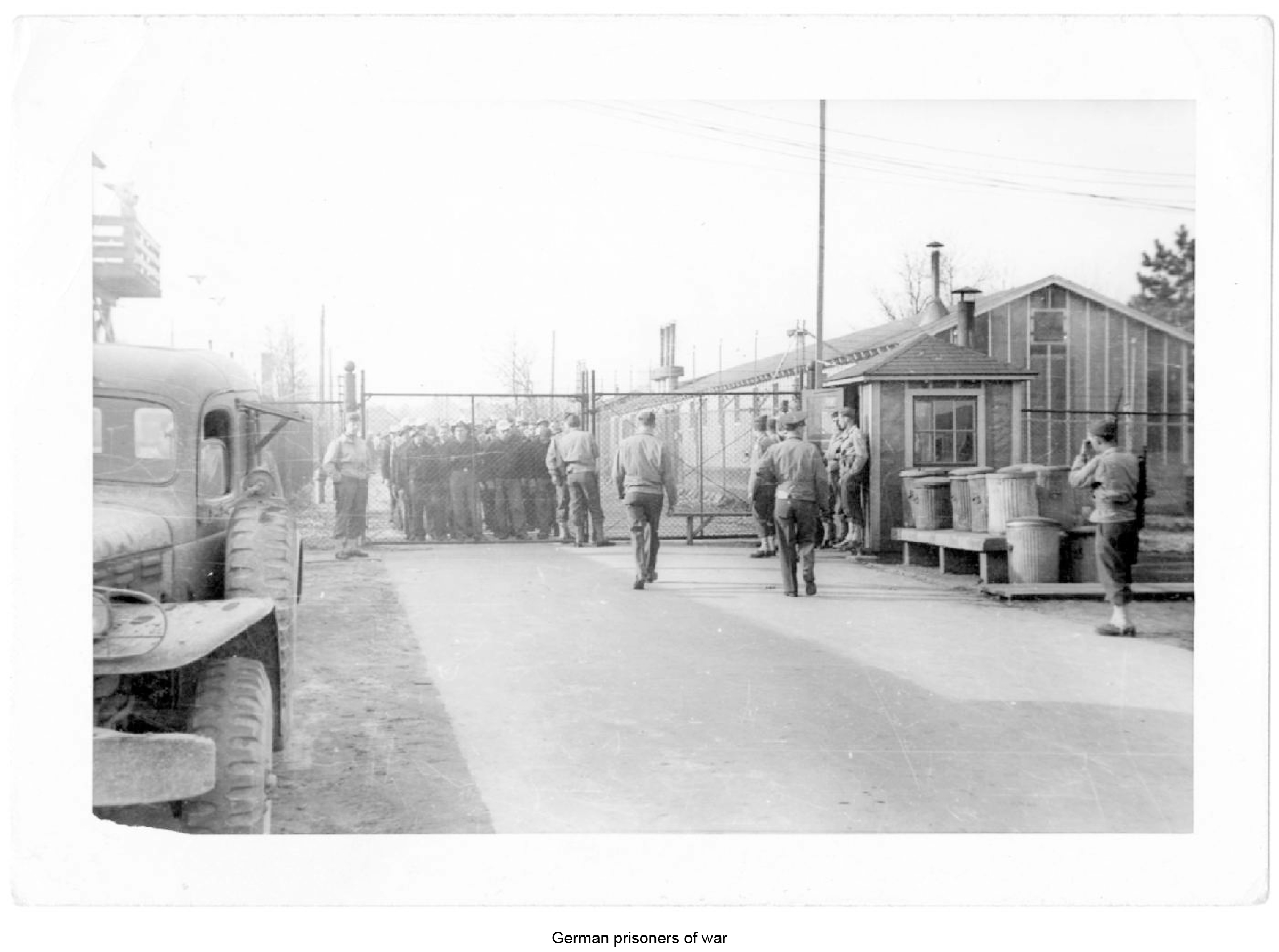
A BRIEF HISTORY OF FORT MCCOY / BREVE HISTORIA DE FORT MCCOY
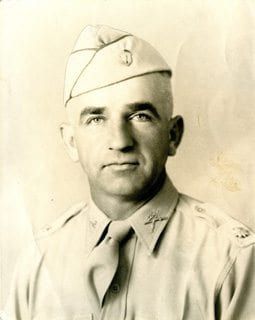
Lt. Col. Robert B. McCoy later in his military career. Image courtesy of Robert C. McCoy, donor of the McCoy family collection at the Wisconsin Veterans Museum Archives.
The history of the La Crosse region, and that of Fort McCoy as a military base, are curiously entangled with Cuba. In 1898, the United States military intervened in the Cuban War of Independence (also referred to as the Spanish-American War). Robert Bruce McCoy (born in 1867) of Sparta was one of about 3,000 Wisconsin boys and men who joined the Wisconsin Infantry to fight in Cuba. However, after a series of events, none of the Wisconsin regiments actually saw action in Cuba. The Second and Third regiments (of which Robert B. McCoy was part) were instead sent to Puerto Rico. When McCoy returned home in 1898, he had recognized that future conflicts were inevitable, and weapons and training had to be improved. McCoy identified a tract of land east of Sparta, and began to buy this land in bulk, for the purpose of developing a military base.
La historia de la región de La Crosse y la de Fort McCoy como base militar están curiosamente entrelazadas con la de Cuba. En 1898, el ejército de los Estados Unidos intervino en la Guerra de Independencia de Cuba (también conocida como la Guerra Hispano-Estadounidense). Robert Bruce McCoy (nacido en 1867) en Sparta, fue uno de los aproximadamente 3.000 jóvenes y hombres de Wisconsin que se unieron a la Infantería de Wisconsin para luchar en Cuba. Sin embargo, después de una serie de acontecimientos, ninguno de los regimientos de Wisconsin entró en acción en Cuba. El Segundo y el Tercer Regimiento (del que formaba parte Robert B. McCoy) fueron enviados en su lugar a Puerto Rico. Cuando McCoy regresó a casa en 1898, ya había reconocido que los conflictos futuros eran inevitables y que era necesario mejorar las armas y el entrenamiento. McCoy identificó una extensión de tierra al este de Sparta y comenzó a comprarla en grandes cantidades con el fin de desarrollar una base militar.
When the conflict with Spain was over in Cuba, U.S. soldiers captured a number of Spanish cannons that had remained in the Havana Harbor. These Spanish cannons were confiscated by the U.S. government. Wisconsin Congressman John Esch advocated to secure two cannons for Wisconsin and lobbied the governor at the time to place one in La Crosse. This cannon has been on display in La Crosse since 1900, and today sits in Riverside Park as evidence of this unique part of shared history between La Crosse and Cuba.
Cuando terminó el conflicto con España en Cuba, los soldados estadounidenses habían capturado varios cañones españoles que habían quedado en el puerto de La Habana. Estos cañones españoles fueron confiscados por el gobierno estadounidense. John Esch, congresista de Wisconsin en aquel momento, abogó por conseguir dos cañones para Wisconsin y presionó al gobernador de aquel momento para que colocara uno en La Crosse. Este cañón ha estado en exhibición en La Crosse desde 1900 y hoy se encuentra en Riverside Park como evidencia de esta parte única de la historia compartida entre La Crosse y Cuba.
After large-scale U.S. military and federal support, Camp Robinson (the precursor to Fort McCoy) was established in 1909. Continued improvements were made over the next 15 years. In 1926, Robert B. McCoy died, and the reservation was renamed Camp McCoy in his honor. Camp McCoy served a variety of purposes in the 1920s and 1930s, including as a Citizens' Military Training Camp and a supply base for the Civilian Conservation Corps (CCC).
Después de recibir gran apoyo militar y federal de los EE. UU., en 1909 se estableció el Campamento Robinson (precursor de Fort McCoy). Durante los siguientes 15 años se realizaron mejoras continuas. En 1926, Robert B. McCoy murió y la reserva pasó a llamarse Campamento McCoy en su honor. El Campamento McCoy cumplió una variedad de propósitos en las décadas de 1920 y 1930, entre ellos, como campamento de entrenamiento militar para ciudadanos y como base de suministros para el Cuerpo Civil de Conservación (CCC).
Fort McCoy gained importance as a military training camp during the 1940s and particularly during WWII. In 1940, the 65,000 soldiers in the Second Army Maneuvers trained at Camp McCoy. At least one regiment of Black American soldiers trained at Camp McCoy. The 100th Infantry Battalion also trained at Camp McCoy. This famous Battalion was composed of young, 3rd-, 4th-, and 5th-generation Japanese Americans from Hawai’i whose family members were forcibly detained at internment camps run by the U.S. government in the aftermath of Pearl Harbor. Anti-Japanese racism was prevalent during this time, influencing national policy. The soldiers in the 100th Infantry Battalion would have faced internment themselves if not for their military service.
Fort McCoy cobró importancia como campo de entrenamiento militar durante la década de 1940, y particularmente, durante la Segunda Guerra Mundial. En 1940, los 65.000 soldados de las Segundas Maniobras del Ejército se entrenaron en el campamento McCoy. Al menos un regimiento de soldados afroamericanos se entrenó también en McCoy. El famoso Batallón de Infantería Número 100, que estaba compuesto por jóvenes estadounidenses de origen japonés de tercera, cuarta y quinta generación de Hawaii también se entrenó en el campamento de McCoy. Muchos de los familiares de los miembros de este batallón fueron detenidos a la fuerza en campos de internamiento dirigidos por el gobierno de los EE. UU. tras el atentado de Pearl Harbor. El racismo anti japonés prevaleció durante esta época, e influyó sobre la política nacional. Los mismos soldados del Batallón de Infantería Número 100 se habrían enfrentado al internamiento de no haber sido por su servicio militar.
Fort McCoy also has long been used as a large-scale detention center. During WWII, for example, about 172 Issei (first-generation immigrant) internees from Hawai’i were detained at Camp McCoy in March-May 1942. Some German-Americans and Italian-American nationalists were also detained at Camp McCoy during this turbulent period. Camp McCoy would also become the largest detention center in the continental U.S. for Japanese prisoners of war (POWs) who were captured and brought to the continental U.S. German and Korean POWs were also detained at Camp McCoy.
Fort McCoy también se ha utilizado durante mucho tiempo como centro de detención a gran escala. Durante la Segunda Guerra Mundial, por ejemplo, alrededor de 172 issei (inmigrantes de primera generación) de Hawaii fueron detenidos en el campamento de la base McCoy entre marzo y mayo de 1942. Algunos nacionalistas germano-estadounidenses e ítalo-estadounidenses también fueron detenidos en la base del campamento McCoy durante esta convulsa época. El campamento de la base McCoy también se convertiría en el mayor centro de detención de los Estados Unidos para prisioneros de guerra japoneses (POW) que fueron capturados y llevados a los Estados Unidos continentales. Prisioneros de guerra alemanes y coreanos también fueron detenidos en el campamento de la base McCoy.
In 1980, Fort McCoy was selected by the Carter Administration as one of four detention centers for the 125,000 Cuban migrants that came to the U.S. during the Mariel exodus. Over 14,000 Cubans were detained and processed at Fort McCoy, until the camp closed in September of 1980 and approximately 3,500 Cuban refugees who had not been placed with sponsors were sent to another Mariel camp, in the base at Fort Chaffee, in Arkansas. In August 2021, Fort McCoy was also one of other seven military facilities involved in Operation Allies Welcome, the U.S. government’s effort to resettle those who were evacuated from Afghanistan during the U.S. military withdrawal. The base hosted more than 12,600 people at its maximum capacity for over five months of the duration of the resettlement operation.
En 1980, la administración Carter seleccionó Fort McCoy como uno de los cuatro centros de detención para los 125.000 inmigrantes cubanos que llegaron a Estados Unidos durante el Éxodo del Mariel. Más de 14.000 cubanos fueron detenidos y procesados en Fort McCoy, hasta que el campamento cerró en septiembre de 1980 y aproximadamente 3.500 refugiados cubanos que no habían sido ubicados con patrocinadores fueron enviados a otro campamento del Mariel, en la base de Fort Chaffee, en Arkansas. En agosto de 2021, Fort McCoy también fue una de las otras siete instalaciones militares involucradas en la Operación Welcome Allies, el esfuerzo del gobierno de Estados Unidos para reasentar a quienes fueron evacuados de Afganistán durante la retirada del ejército estadounidense. Fort McCoy, a su máxima capacidad, albergó a más de 12.600 personas durante los más de cinco meses que duraron las operaciones de reasentamiento.
Last Updated Date
The La Crosse Public Library welcomes patron participation and comments on the La Crosse Public Library’s social media and in our online forums. All LPL online sites are governed by general rules of respectful civil discourse. Individual patrons are fully responsible for everything that they post.
The La Crosse Public Library does not discriminate against any views. However, we reserve the right to remove content that violates the below rules, without consent. We do not verify the identity of participants.
- The Library will remove:
- Off topic contributions
- Content that contains obscenity, nudity, defamation or hate speech (Speech that targets people or groups based on race, ethnicity, religion, gender, or any other protected status).
- Content that threatens to harm individuals, groups, or organizations
- Spam and content that promotes services or products, or that involves political campaigning or lobbying.
- Comments that give the appearance of legal, medical or financial advice.
- The Library may remove
- Content that contains personal information (whether your own or someone else's), including home address, home or cell phone number, or personal e-mail address, in order to protect privacy.
- Gratuitous links to sites.
- Repeat submissions of the same (or very similar) contributions will be viewed as spam and may result in the content being removed.
- The Library will only post content from participants over 13 years of age.
- Communications made through social media posts, e-mail, webinars, and messaging systems will in no way constitute a legal or official notice or comment to the La Crosse Public Library or any official or employee of the Library for any purpose.
- All user-generated content is released into the public domain unless the participant clearly states otherwise,
- Users who do not comply with these standards of conduct may be blocked.
Disclaimer for links posted on our Website or Social Media
External links are being provided as a convenience and for informational purposes only; they do not constitute an endorsement or an approval by the La Crosse Public Library of any of the products, services or opinions of the corporation or organization or individual. The La Crosse Public Library bears no responsibility for the accuracy, legality or content of the external site or for that of subsequent links. Contact the external site for answers to questions regarding its content.
Reviewed and approved by Library Board, November 2021
